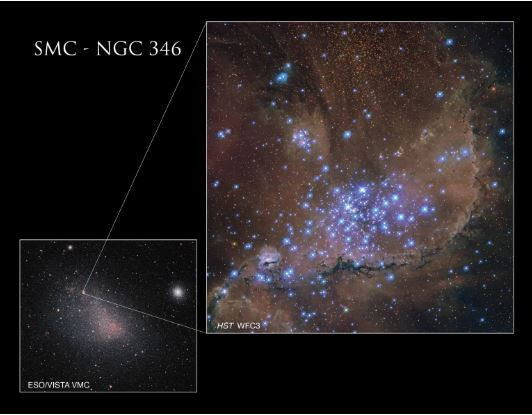Within the Small Magellanic Cloud lies an impressive star cluster known as NGC 346
About 210,000 light-years away, the Small Magellanic Cloud (SMC) is one of our Milky Way’s closest neighbors. In fact, this small galaxy is one of the “satellite” galaxies of our Milky Way, orbiting it.
Within the Small Magellanic Cloud lies an impressive star cluster known as NGC 346. Its stars release a torrent of radiation and energy outflows that erode the denser layers of gas and dust in the surrounding nebula, N66. Dozens of blue and massive stars shine within NGC 346, with astronomers believing that this cluster contains more than half of the known high-mass stars in the entire SMC.
NASA/ESA’s Hubble Space Telescope has imaged this star cluster before, but a new observation shows NGC 346 in ultraviolet light that helps scientists understand more about star formation and evolution. Hubble – with its combined sharpness and position above our UV-blocking atmosphere – is the only telescope capable of recording this kind of data.
These observations were collected and are set to enlighten experts on how star formation shapes the interstellar medium, which is the gas distributed in seemingly empty space, in a low-metallicity galaxy like the SMC.
Source :Skai
I am Terrance Carlson, author at News Bulletin 247. I mostly cover technology news and I have been working in this field for a long time. I have a lot of experience and I am highly knowledgeable in this area. I am a very reliable source of information and I always make sure to provide accurate news to my readers.











